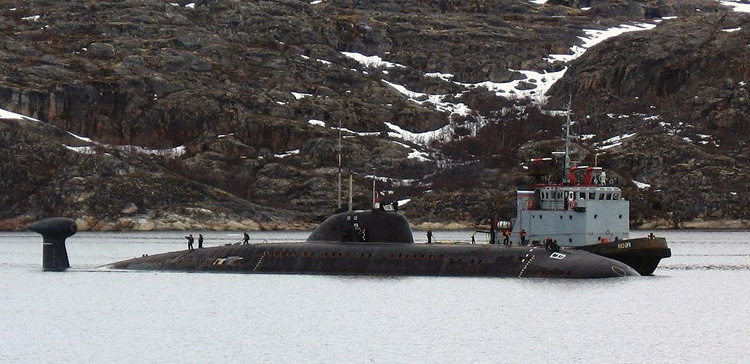- Prime Minister Narendra Modi inaugurates Aero India 2023 in Bengaluru; Releases Commemorative Stamp
- Defence Secretary meets delegations from Saudi Arabia, USA and Oman on the sidelines of Aero India 2023
- Foreign Ministers of 32 countries to attend Aero India 2023
- Embraer showcases the C-390 Millennium at Aero India 2023
Defexpo heralds India's re-entry to nuclear club

As India's submarine programme ramps up towards the next big maritime procurement effort in Project 75 India, DefExpo 2012 comes just days before India quietly slips back into the nuclear club. On April 4, the Indian Navy will commission the Russian-built Akula-II class nuclear powered attack submarine K-152 Nerpa rechristened as INS Chakra into service. The 8,000- ton double-hulled boat heralds a new beginning for the Indian Navy, which last operated a nuclear attack submarine - the previous INS Chakra, a Charlie-class boat - between 1988-92. With its commissioning, India is back in that exclusive little club of nations that operate such submarines. The new INS Chakra will operate on lease with the Indian Navy until 2022, after which its lease may be further extended if necessary. According to the Navy, the nuclear boat will help in consolidating operational dynamics of a complex technology and assist in developing doctrines for the future. The INS Chakra comes armed with antiship and anti-submarine torpedoes, anti-ship missiles and surface-to-air missiles deployable from the surface. The submarine will be commissioned into service at Visakhapatnam, where India's own nuclear-powered ballistic missile boat Arihant is reportedly set for its final journey before being commissioned into service. In development for years, it was only in July 2009 that the Indian government revealed the programme to the world. A second hull is already under fabrication on a line that will ultimately produce at least three SSBNs for the Indian Navy. Several large and small Indian and foreign companies that have contributed indispensably to the Arihant-class SSBN programme are here at DefExpo. The opportunities for companies in the Indian submarine space are huge: First, of course, the ongoing Scorpene licensebuild programme at Mazagon Dock Ltd. DCNS, recently concluded a contract with India's SEC Industries worth Rs 310-cr for the indigenization of several bits of equipment for the Scorpene submarines including hull hatches, cofferdam doors, knuckle hoses, ballast vent valves, high pressure air cylinders, weapon handling and storage system. More companies will be brought on board the programme progressively. The other two big submarine opportunities are the Project 75I and in many ways the country's strategic underwater assets effort as well.
The most immediate, of course is the $11-billion Project 75 India, a competition expected to be fought four ways between the Rubin Design Bureau Amur 1650, DCNS Scorpène, Howaldtswerke- Deutsche Werft Type 214 and Navantia S-80. All four companies are at DefExpo. One of the key requirements of the new submarine line will be closed cycle or airindependent propulsion for greater endurance. All four companies are off the mark on this count: while DCNS will be displaying a model Scorpène with the MESMA AIP system, Russia on Tuesday offered to assist India in developing an AIP system for the Amur 1650, and perhaps future vessels built jointly. "Russia is currently completing tests of a new air-indepedent propulsion system. This is a critical factor for the Indians. So our chances here are good," said Viktor Komardin, deputy leader of Rosoboronexport's delegation to DefExpo 2012. The underwater battle has already begun with the Russian delegation declaring the Amur 1650 technologically superior to its very worthy competition.





